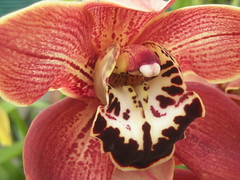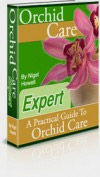Orchids have risen quickly in popularity as a house plant simply because of their wonderful variety of colors, sizes, species and attractive flowers. Just as with other plants, providing your orchid with it’s ideal growing conditions is key to a beautiful, healthy orchid. An essential part of this process is providing your orchid with the correct amount of water. As this amount can vary significantly between different orchids it is very important to research and educate yourself about your specific species. However, a general knowledge and understanding of orchids and their origins is going to be beneficial to you in the beginning.
Preferred Orchid Climates
Around the world orchids are usually located in tropical regions, these regions receive a large amount of rain and conditions are extremely humid. An ideal habitat for orchids would have a humidity level of around 80%, this would be expensive and awkward to achieve at home and not especially comfortable for you. For this reason orchid growers have developed several other easy to implement techniques for keeping their orchids healthy and growing indoors. One of these methods, and arguably the easiest, is to provide your orchid with a constant supply of water by placing your orchid pot in a larger pot containing pebbles. The pebbles can then be watered and provide your orchid with an artificially created high humidity micro climate. The pebbles separate your orchid from direct contact with the water in the tray preventing your orchid from over-watering which is very important.
This is one of the more common mistakes that new growers make when caring for their orchids but once understood is easily avoided. It’s a common misconception held by many that once the orchids potting soil appears dry their plant requires watering. This does not usually hold true, especially when it comes to orchids. Soil or bark can often appear dry but may still hold moisture. A good guideline is to water orchids sparingly once every week or second week. For indoor orchids you should make sure that potting bark or soil has dried out completely before watering again. Some species of orchid grow on the trunks and branches of trees and it is completely natural for their roots to dry out before they receive water again.
Fertilizing Orchids
Your orchid will also require fertilizing periodically but this too should be done sparingly. Specialist orchid fertilizer is available at most gardening centres.
Despite their beauty orchids can be temperamental but with proper care and understanding of their needs orchids can thrive in a home. This includes:
- The correct amount of potting bark
- The right level of water
- Proper amounts of sunlight
- Fertilizer
Orchids are really not that complicated and a little knowledge will take you a long way. Building a regular routine around watering and fertilizing is an excellent way to ensure a long healthy life for your orchid and your continued enjoyment of these beautiful plants.


